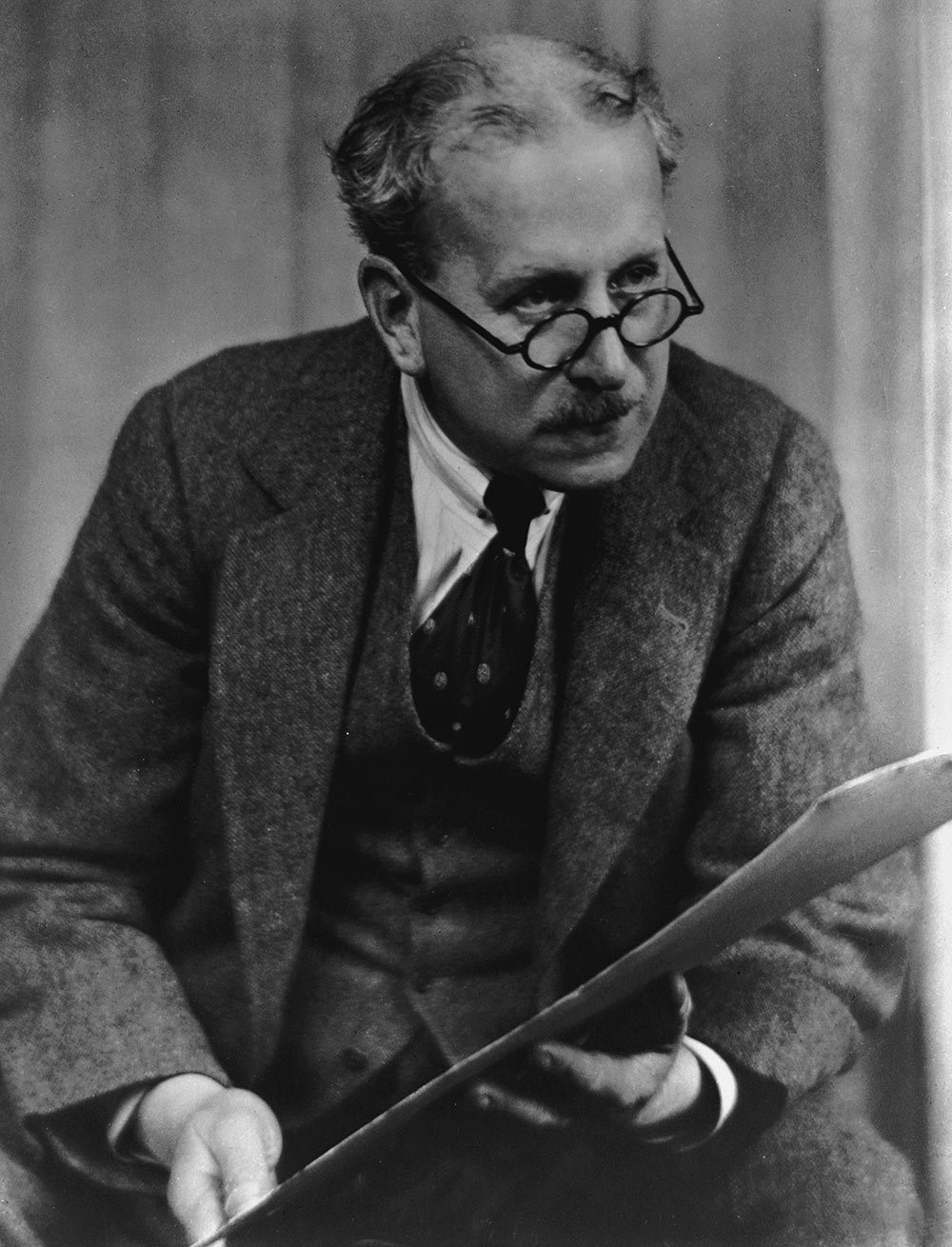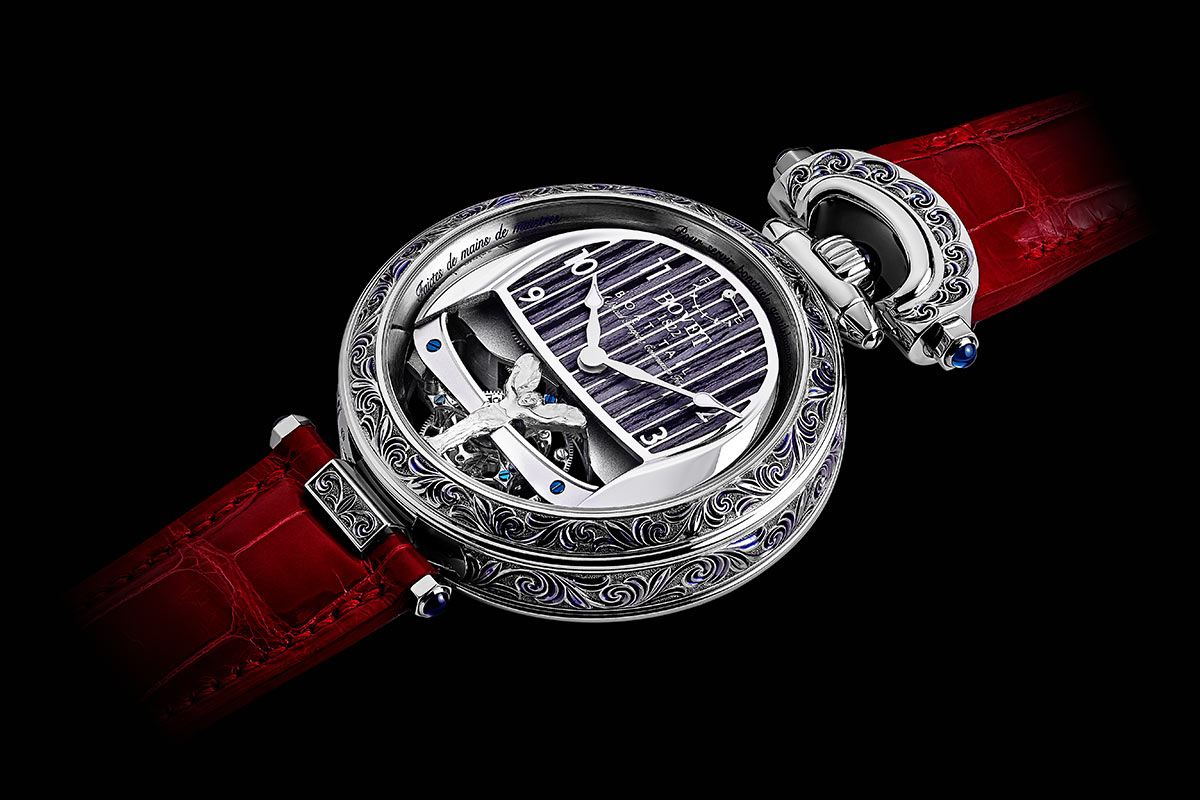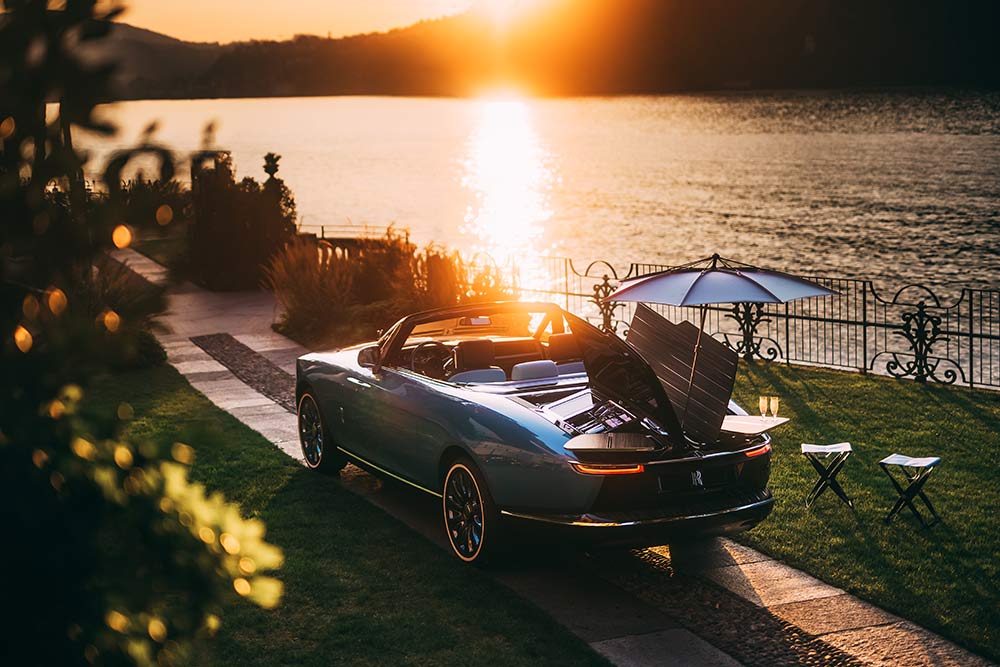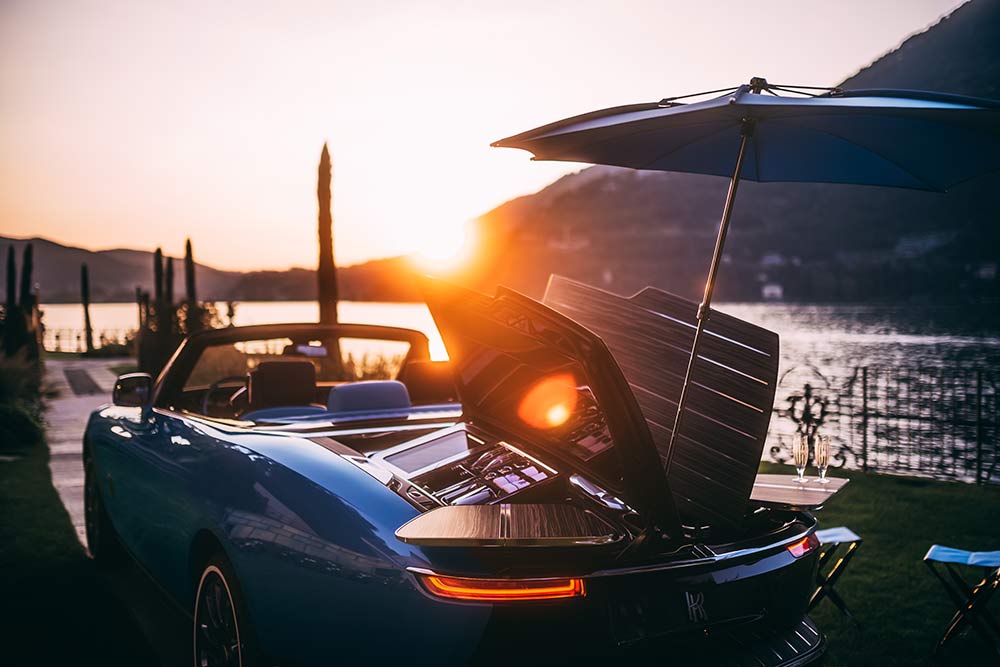ROLLS-ROYCE PHANTOM: A NEW EXPRESSION
Rolls-Royce Motor Cars announces a new expression for Phantom Series II. Adaptations to the eighth-generation Phantom include ‘light-touch’ visual and aesthetic enhancements in line with client requests and feedback.
- Rolls-Royce Motor Cars announces a new expression for Phantom Series II
- Adaptations to the eighth-generation Phantom include ‘light-touch’ visual and aesthetic enhancements in line with client requests and feedback
- New ‘Rolls-Royce Connected’ feature seamlessly links Phantom with the marque’s private members’ Application, Whispers
- Launch is commemorated with a new Bespoke masterpiece, Phantom Platino
“Phantom occupies an unrivalled position at the very apex of the luxury world. As our pinnacle product, it represents the very best of Rolls-Royce design, engineering and craftsmanship – a perfect blend of vision, creativity, the finest materials, skill, patience and precision.
With Phantom Series II, we have retained and carefully protected everything our clients love about this superlative and luxurious item; subtle, yet meaningful enhancements reflect their evolving tastes and requirements.
“Phantom has always been viewed as the ‘best car in the world’: our Bespoke capabilities mean that, for our clients, it can be the best car for their world, too.”
Torsten Müller-Ötvös, Chief Executive Officer, Rolls-Royce Motor Cars

Rolls-Royce products enjoy an expansive lifetime, ultimately becoming timeless expressions of good taste, beauty and luxurious perfection. Phantom occupies a unique, pinnacle position in this regard, being revered for its timeless elegance.

The eighth-generation of Phantom was presented in 2017. In creating the new expression, Rolls-Royce designers and engineers have been guided by the requests of clients, who have implored Rolls-Royce not to make any major changes to an already iconic motor car. In answer to these client demands, only the lightest of design touches, embellishments, and adaptations have been incorporated. Indeed, it is not about what should be changed, but in fact, what should be preserved and protected.
A NEW EXPRESSION
The most obvious and important feature to be retained is Phantom’s commanding presence. This has been further enhanced by a new polished horizontal line between the daytime running lights above the Pantheon Grille. This gives Phantom a new and assertive modernity, reflecting its driver-focused character.
A subtle geometric change to the Pantheon Grille makes the ‘RR’ Badge of Honour and Spirit of Ecstasy mascot more prominent when viewed from the front. The grille itself is now illuminated, a feature debuted and popularised in Ghost. The headlights are graced with intricate laser-cut bezel starlights, creating a visual connection with the Starlight Headliner inside, and adding further surprise and delight to Phantom’s night-time presence.
Phantom’s side profile retains Rolls-Royce’s signature short front and long rear overhang, long wheelbase and broad c-pillar, the latter giving greater privacy for occupants. The silhouette preserves the elegant key lines running from the Spirit of Ecstasy to the tapering rear tail. The ‘split-belt’ line begins at the front fender and curves gently towards the rear door, emphasising the car’s long dash-to-axle proportions, before falling gently towards the lantern-like rear lamps. The heavily undercut ‘waft line’ creates a strong shadow, visually signalling the marque’s unequalled ‘Magic Carpet Ride’.
The side profile is further enhanced with a suite of new wheels. A 3D, milled, stainless steel wheel with triangular facets is available to commission in a fully or part-polished finish. Alternatively, Phantom may be graced with a truly elegant disc wheel, recalling the romance of 1920’s Rolls-Royce motor cars. This disc wheel is produced in both polished stainless steel and black lacquer, perfectly encapsulating the sense of flight on land.
Responding to Phantom clients who have previously requested a darkened chrome grille surround, black bonnet reins, windscreen surround and side frame finishers, these may now be commissioned. This aesthetic now enables Rolls-Royce to transform Phantom into the lightest of light or the darkest of dark appearances.
Phantom’s sumptuous interior remains almost unaltered: the steering wheel has been made slightly thicker, providing a more connected and immediate point of contact for the owner-driver.
Phantom and Phantom Extended have distinct characters of their own, representing two different seats of power. Phantom is now predominantly favoured by the ever-increasing number of clients wishing to be in the driving seat themselves. For those preferring to command the road from the rear seat, Phantom Extended offers the definitive super-luxurious chauffeur-driven experience.
ROLLS-ROYCE CONNECTED
Now, Phantom includes the debut of ‘Rolls-Royce Connected’. This enables the owner to send an address directly to the motor car from Whispers, the Rolls-Royce private-members’ Application, providing seamless navigation to an event, restaurant, dealership or even the Home of Rolls-Royce itself.
‘Rolls-Royce Connected’ also displays the motor car’s location, security status and current ‘health’ condition on Whispers; at the touch of a button, the owner can contact a preferred dealership for any servicing requirements or information about the car.
THE ‘POLES OF LUXURY’
As the marque’s pinnacle product, Phantom attracts an elite stratum of Rolls-Royce clients. Established and successful, at the top of their field and often in the public eye, these are determined and demanding people. It is no coincidence that Phantom attracts the most ambitious and challenging Bespoke commissions ever undertaken by Rolls-Royce.
The resulting creations − each an artistic masterpiece in its own right − illustrate a broader truth: since its inception, Phantom has always been whatever the client wants it to be; not only the ‘best car in the world’, but the best car for them and their world.
Self-evidently, there is no such thing as a ‘typical’ Phantom client. Spanning the ‘poles of luxury’, they may be ever-younger or older, modern or traditional, self-made or from long-established wealth. Their commissions reflect a full spectrum of interests and influences. At one extreme, Phantom takes on a subversive, almost rebellious character – youthful, dynamic and daring. At the other, Phantom transforms into an ode to luxury grandeur and timelessness.
The challenge of the Rolls-Royce Bespoke Collective is to accommodate this vast expanse of client characteristics and desires in one pinnacle product. The eighth-generation Phantom has thus been deliberately designed to offer a ‘blank canvas’ for Bespoke personalisation, capable of becoming whatever the client wishes it to be, and a true reflection of their individual style and character.
Phantom’s great strength and appeal is that it allows clients to position themselves anywhere between these ‘poles of luxury’, defining luxury on their own terms. And wherever that point happens to lie, they have the assurance that Phantom itself is − technically, materially, aesthetically and dynamically − still the ‘best car in the world’.
PHANTOM PLATINO: THE RETURN OF FINE TEXTILES
To mark the introduction of Phantom Series II and to illustrate Rolls-Royce’s Bespoke capability, the marque has created a new Bespoke masterpiece, Phantom Platino, named after the silver-white finish of the coveted and precious metal, platinum.
Phantom Platino continues Rolls-Royce’s exploration into fabric interiors, a story which began in 2015 with the launch of Serenity, a truly Bespoke Phantom with a hand-painted, hand-embroidered silk interior. Heralding the next step in this significant journey, Phantom Platino introduces materials other than leather, an area of exploration for Rolls-Royce and a move that demonstrates a greater acceptance of alternative interior upholsteries.
Echoing the marque’s formative days, the front seats of Phantom Platino are finished in fine Rolls-Royce leather, while those in the rear are upholstered in fabric.
The beautiful tone-on-tone of Platino’s interior is achieved by combining two differing fabrics; one created in an Italian mill for its durable yet luxurious appearance, the other derived from bamboo fibres, selected for its lustrous finish.
Both materials share an original repeating pattern based on an abstract interpretation of the Spirit of Ecstasy. In the silken textile, the design is smaller and woven into the fabric to create a more visually stimulating finish. It also appears in Phantom’s Gallery, right in the occupant’s line of sight, and on key touchpoints such as the armrest and centre console. The bamboo fabric is embroidered with larger icons, presenting a tufted appearance commonly found in interior design. This more resilient material is placed on the lower elements of the interior where they will need to withstand most contact.
The same design also appears on Phantom’s dashboard timepiece. The surround is made from a 3D printed ceramic, a truly contemporary execution of a traditional material. Set into an iced finish woodset, the tonal properties of the interior take Phantom to a beautiful and unsurpassed level of opulence.
The largest canvas in Phantom is the Starlight Headliner. In a unique design created especially for Rolls-Royce Platino, the ‘stars’ are placed to draw the eye rearwards, with whimsical shooting stars following the sweeping arc of the pattern.
Torsten Müller-Ötvös, Chief Executive Officer, Rolls-Royce Motor Cars, says, “We are acutely conscious of our clients’ esteem for and love of their Phantoms. They felt it could not be improved; but while naturally respecting that view, we believe it is always possible, indeed necessary, to gently go further in our pursuit of absolute perfection.
“The subtle changes we have made for the new Phantom Series II have all been minutely considered and meticulously executed. As Sir Henry Royce himself said: ‘Small things make perfection, but perfection is no small thing’.”
CO2 EMISSIONS & CONSUMPTION.
- Phantom Series II: NEDC combined: CO2 emissions: 345 g/km; Fuel consumption: 18.7 mpg / 15.1 l/100km. WLTP combined: CO2 emissions: 351-362 g/km; Fuel consumption: 17.7-18.2 mpg / 15.5-16.0 l/100km.
- Phantom Extended Series II: NEDC combined: CO2 emissions: 345 g/km; Fuel consumption: 18.7 mpg / 15.1 l/100km. WLTP combined: CO2 emissions: 353-365 g/km; Fuel consumption: 17.4-18.1 mpg / 15.6-16.2 l/100km.

























































